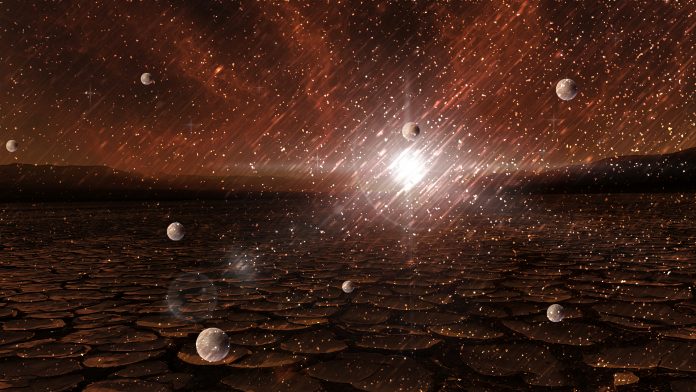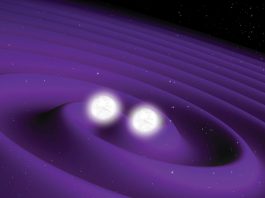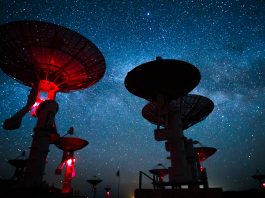Using the innovative ESPRESSO spectrograph, researchers have found an exoplanet where it appears to rain iron, due its surface temperature exceeding 2,400°C.
Researchers have discovered an exoplanet where temperatures exceed 2,400°C, which is hot enough to evaporate metals. This exoplanet, named WASP-76b, has strong winds that cool down the iron vapour in the atmosphere, condensing it into droplets. These findings were the first findings from the high resolution spectrograph Echelle SPectrograph for Rocky Exoplanets and Stable Spectroscopic Observations (ESPRESSO), an instrument co-directed by the Instituto de Astrofísica de Canarias (IAC) and installed on the Very Large Telescope (VLT) of ESO, in Chile.
ESPRESSO is the next generation European exoplanet hunter; the spectrograph aims to combine the efficiency of a modern echelle spectrograph with extreme radial velocity and spectroscopic precision.
Using ESPRESSO, astrophysicists have been able to identify chemical variations on WASP-76b depending on the time of day. The research team detected the trace of iron vapour just at the division between the daytime and the night-time sector of the planet.
This is the first time that chemical variations have been detected in a giant ultra-hot planet. David Ehrenreich, a researcher at the University of Geneva, said: “however, suprisingly we do not see this iron vapour at dawn. The only explanation possible for this phenomenon is that it rains iron on the dark side of this exoplanet with extreme conditions.”
Daytime is so hot that the molecules split into atoms
María Rosa Zapatero Osorio, researcher at the del Centre for Astrobiology of the CSIC and coordinator of the ESPRESSO science team, said: “show a huge quantity of iron in the daytime atmosphere of the giant planet WASP-76b. A part of this iron is transported to the dark side of the planet due to its rotation and the atmospheric winds. There in the cooler environment of the dark side of the planet, the iron condenses and precipitates”.
“Just like the Moon around the Earth, this planet always keeps the same face towards its star as it rotates around it, which causes this extreme difference in temperature between day and night on the planet” explains Jonay I. Gonzálezz Hernández, Ramón y Cajal researcher at the IAC and a member of the science team of ESPRESSO.
WASP-76b’s daytime is so hot that the molecules split into atoms, and metals such as iron evaporate into the atmosphere. The difference of more than a thousand degrees between night and day produces strong winds which take the iron vapour into the coolest part of the exoplanet.
Do you want the latest news and updates Innovation News Network? Click here to subscribe, and make sure to stay connected with us.












